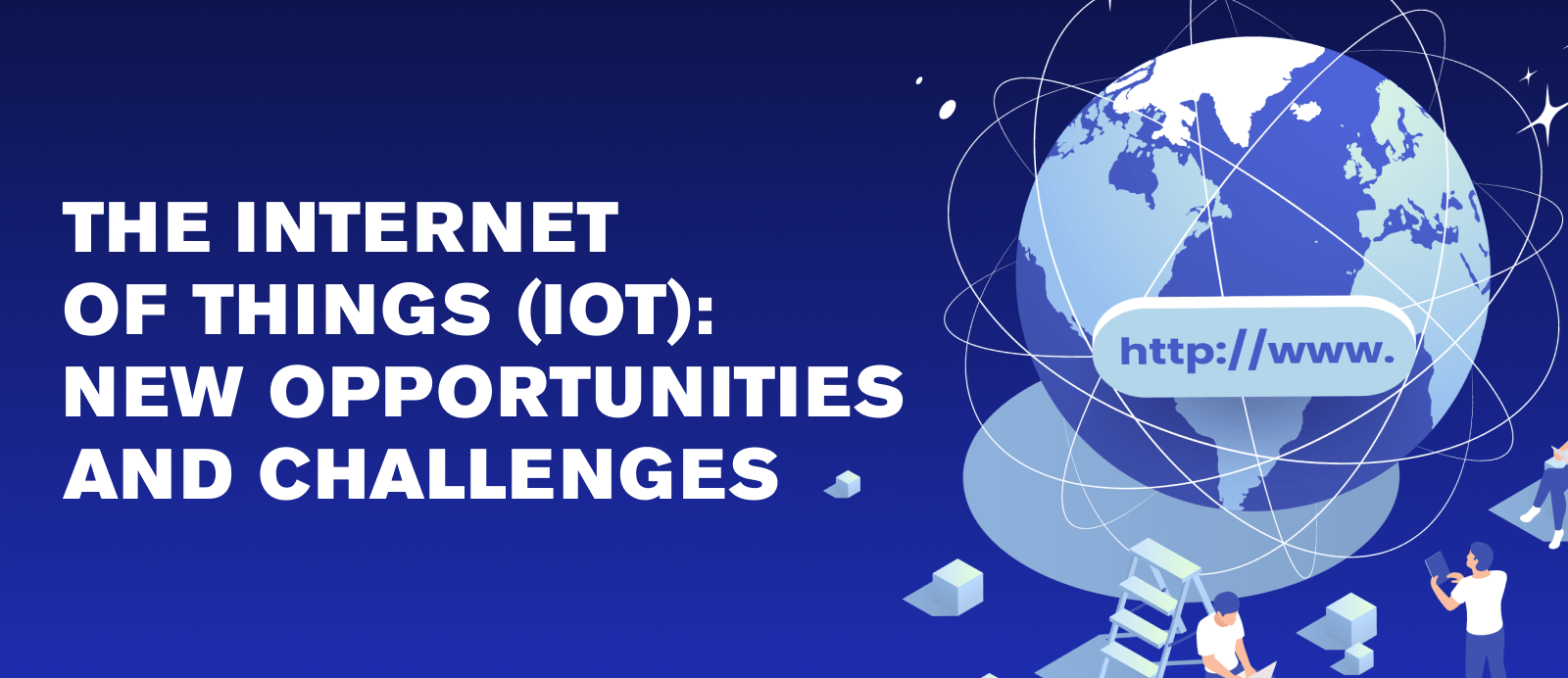OPPORTUNITIES
Smart Homes. Imagine waking up in a world where your coffee is ready, the curtains are open, and the thermostat is set to a comfortable temperature. With IoT-enabled smart devices, our homes are becoming more responsive and adaptable to our preferences and habits.
Smart refrigerators can remind you to buy milk, and smart ovens can cook dinner at the exact temperature. Security systems warn if something is wrong, and smart bulbs adapt to your mood and energy needs. This new era of comfort, convenience, and efficiency is a direct result of IoT.

Improved Healthcare. In the healthcare sector, IoT devices monitor patients’ vital signs, deliver medications, and even assist in surgeries. Wearable devices can track your heart rate, sleep patterns, and exercise regime, providing valuable data to medical professionals.
For example, a heart monitor connected to the patient’s smartphone can send real-time information to the doctor, allowing them to detect and address issues immediately. It’s an invaluable tool that may save lives and enhance preventive care.

Sustainable Agriculture. Farmers are using IoT devices to control irrigation, monitor soil quality, and keep an eye on livestock. Sensors can detect the moisture level in the soil and irrigate the land accordingly, conserving water and boosting crop yield.
An example is smart greenhouses, where conditions like humidity, temperature, and light are continually monitored and adjusted for optimal growth, leading to less waste and higher-quality produce.

Transportation and Traffic Management. Cities are employing IoT technology to manage traffic, reduce congestion, and reduce pollution. For instance, smart traffic lights can adjust timings based on real-time traffic conditions. Self-driving cars use IoT technology to communicate with other vehicles and infrastructure, promising a future with fewer accidents and more efficient travel.

CHALLENGES
While the opportunities are exciting, IoT has its challenges.
Security. The interconnected nature of IoT devices creates new vulnerabilities. A breach in one device might provide access to personal data across various platforms. For example, if a hacker gains access to a smart thermostat, they might enter your home security system, creating significant risks.
Privacy. With so many devices collecting data on our every move, there’s a growing concern about privacy. Who owns this data? How is it used? What if it falls into the wrong hands? Consumers must be vigilant about the devices they use and the information they share.
Interoperability. Different manufacturers produce IoT devices; some use different protocols or standards. It can lead to compatibility issues. Imagine having a smart home where half of your devices can’t communicate with the others. Standardizing communication between devices is a complex challenge that needs addressing.
Environmental Impact. The proliferation of IoT devices also leads to increased electronic waste. How do we ensure that these devices are disposed of or recycled responsibly? The pressure on resources to create, power, and dispose of these devices could be a growing concern.
CORE IoT TECHNOLOGIES
Sensors and Actuators. Sensors and actuators are the eyes and hands of IoT. They measure physical parameters such as temperature, humidity, or motion (sensors) and perform physical actions such as turning something on or off (actuators).
For example, in a smart farming scenario, soil moisture sensors can detect when the land is dry and trigger actuators to open water valves, thereby starting irrigation.
Embedded Systems. Embedded systems are specialized computing devices that perform dedicated functions within a more extensive system. They allow a smart thermostat to adjust the heating or cooling of your home continually. These systems are designed for efficiency, performing specific tasks with minimal resources.
Networking Technologies. IoT devices need to communicate, and various networking technologies enable this communication. Wi-Fi, Bluetooth, Zigbee, LoRaWAN, and cellular networks like 5G are connectivity options linking devices together.
A fitness tracker, for instance, might use Bluetooth to sync data to your smartphone, while a fleet of self-driving cars might utilize 5G to communicate with each other and central traffic management systems.
Cloud Computing. Cloud platforms provide the storage and processing power to handle the massive amounts of data IoT devices generate. They enable real-time analysis and accessibility from anywhere.
An example would be a healthcare system where patient data collected from wearable devices is sent to the cloud. Here, advanced analytics can process this information, and medical professionals can access it anywhere.
Machine Learning and Artificial Intelligence (AI). AI and machine learning technologies enable IoT devices to learn from the data they collect and make intelligent decisions.
In a smart home, machine learning algorithms might analyze your energy consumption patterns and automatically adjust settings to save energy. Similarly, AI can enhance industry predictive maintenance, allowing machinery to predict when it might fail and schedule repairs accordingly.
Blockchain Technology. Blockchain provides a secure and transparent way to record transactions between IoT devices. It is crucial in applications where trust, accountability, and auditability are vital.
For example, in a supply chain monitoring system, blockchain could track the movement and condition of products in real time, providing an immutable record that all parties can trust.
Edge Computing. Edge computing processes data closer to where it is generated rather than sending it all to a centralized data center. It can reduce latency and bandwidth use, improving efficiency.
In a manufacturing environment, edge computing could enable real-time processing and control of machinery without the delay that might occur if data had to travel to a distant data center and back.
***
The Internet of Things is reshaping the world in many positive ways, from the comfort of our homes to life-saving advancements in healthcare. However, it also brings new challenges that society must address. By understanding both the opportunities and potential pitfalls, we can harness the full potential of IoT while navigating its complexities. The future of IoT is promising, and its impact on our daily lives is only beginning to be realized.
